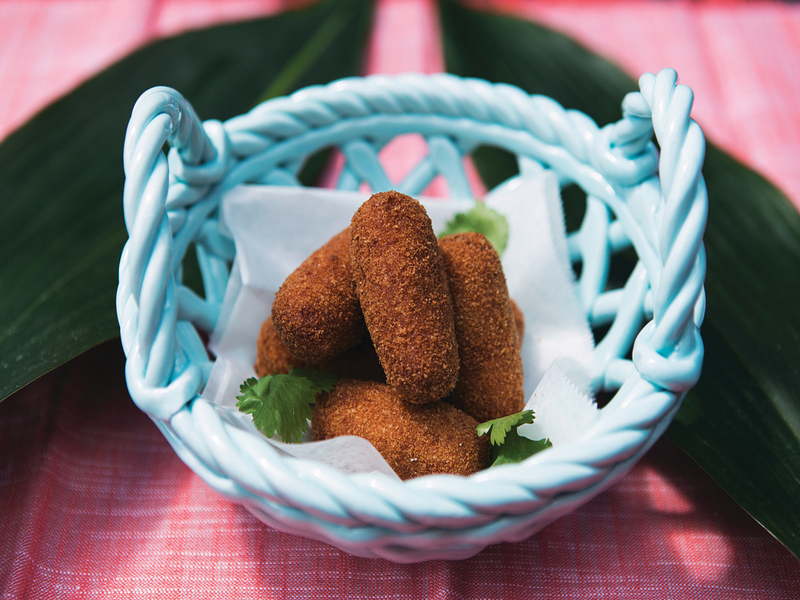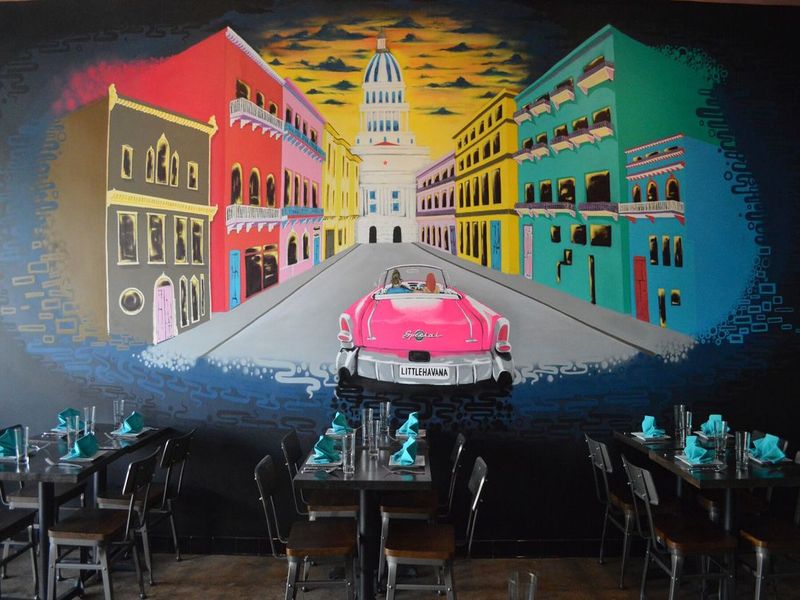Cocktails for a Cause
/By Tim Ebner | Photography by Jennifer Chase
Carlie Steiner has a lot to say, America, and she’s speaking out loud, one cocktail at a time.
Carlie Steiner has a lot to say, America, and she’s speaking out loud, one cocktail at a time.
Taking a nontraditional approach to cocktail design, Steiner, co-owner of Himitsu and manager of their drinks program, recently debuted a trio of cocktails that she designed to help spotlight social causes she supports.
These are also cocktails that have unique backstories, each with roots from Steiner’s life. From the rugged mountain terrain of Bolivia, to that week she spent volunteering with migrants at the U.S.–Mexican border, each cocktail tells a new story of impact that she hopes others will recognize and support.
“In 2018, I gave myself a lot of excuses that I was just one person, so what could I do to change things?” Steiner says. “This year is all about making an impact both in big and small ways.”
It’s a sentiment that inevitably spilled onto Himitsu’s spring cocktail menu. Look for three new drinks to know by name: The Tamarind Chufly, Don’t Call Me Lady-Boss and We Fed an Island.
In three acts, here are Steiner’s stories of impact, the ride-along recipes (for the at-home bartender) and three ways you can join Steiner in her causes.
With this cocktail, named the Tamarind Chuffy, Steiner says you’re already supporting Bolivian farmers who have made singani for centuries, but she encourages people to take their impact a step further by donating money to Water for People, a nonprofit that works on water accessibility issues in Bolivia.
ACT 1: RAISING BOLIVIA OUT OF POVERTY
Drink: The Tamarind Chufly
Backstory: Steiner’s introduction to singani, a popular Bolivian spirit, came through a close friend and partner from Chufly Imports, Tealye Long. In the bartending world, singani is a bit of a dark horse trailing behind mezcal or pisco, but in the DC bar scene, thanks in no small part to Chufly Imports’ presence, singani is almost always on a drink menu or bar shelf. The spirit, which is produced from high-altitude fermented grapes, has a light, floral and citrus expression that makes it easy to work into many cocktail combinations. In Bolivia, the natural drink of choice is the Chufly, a simple cocktail made with singani and ginger ale or ginger beer. Steiner’s take on a Chufly involves infusing tamarind for several days. “I like the tamarind flavor because it’s a really beautiful balance of both sweet and sour,” she says. “And I wanted to incorporate that into my own take on a Chufly with other natural ingredients—ginger and lime.”
But how exactly did a Bolivian cocktail make it on the menu at Himitsu, a restaurant that specializes in Korean fried chicken? Steiner took a trip to Bolivia and it was love at first step into her home away from home. “As a solo traveler I was very nervous about going, but the truth is I didn’t have a single bad day there,” she says. “I also found that there’s an inherent kindness to the people. It’s incredibly family-oriented and based always in love.” But Bolivia is also a land of extremes—high altitude and poverty and where clean water and access to sanitation are not always guaranteed. With this cocktail, Steiner says you’re already supporting Bolivian farmers who have made singani for centuries, but she encourages people to take their impact a step further by donating money to Water for People, a nonprofit that works on water accessibility issues in Bolivia.
The Tamarind Chufly
½ ounce lime juice
1 ounce cold-pressed ginger syrup
2 ounces Rujero singani infused with tamarind for flavor
In a cocktail shaker mix all the ingredients together. Shake vigorously, then strain and top with soda water. Garnish with a lime.
How to support the cause? Drink Bolivian wine and spirits, take a trip to this magical country or donate to Water for People (waterforpeople.org), a nonprofit that offers high-quality drinking water and sanitation services to communities in Bolivia.
The Don’t Call Me a Lady-Boss cocktails features equal parts (pun intended) Rodham (as in Hillary) Rye whiskey, Capitoline White Vermouth and Tiber, which is an even better stand-in for Campari, according to Steiner.
ACT 2: WOMEN SUPPORTING WOMEN
Drink: Don’t Call Me Lady-Boss
Backstory: When Steiner went looking for a DC-specific Negroni, it didn’t take her long to realize that she could do so using ingredients sourced exclusively from women-owned spirit brands found inside the District: Republic Restoratives and Capitoline, both located in Ivy City.
“How amazing is that? I think it’s fate,” Steiner says. “This drink is all about women and supporting women in this battle of equality.” The drink features equal parts (pun intended) Rodham (as in Hillary) Rye whiskey, Capitoline White Vermouth and Tiber, which is an even better stand-in for Campari, according to Steiner.
“What I love about a Negroni is that it’s so easy to make,” she says, “and it’s the perfect drink to for some outdoor drinking on a warm spring day.” The naming of this drink—Don’t Call Me Lady-Boss—came from Steiner’s experience rising in the ranks of the food and beverage community and working in an industry that’s oftentimes male-dominated. “As I went along, people would always call me a lady-boss,” she explains. “I thought, ‘Why are people calling me a lady-boss? I don’t call you a man-boss. Just call me a boss.’”
Don’t Call Me Lady-Boss
1 ounce Republic Restoratives Rodham Rye
1 ounce Capitoline White Vermouth
1 ounce Capitoline Tiber
A few drops of cold-pressed orange oil
Add all the ingredients together, then stir and garnish with a few dashes of orange oil.
How to support the cause?
Make a point to support women-owned craft spirit brands like Capitoline Vermouth and Republic Restoratives in Washington, DC.
_____________________________________________________________________
About this drink, named We Fed an Island, Steiner said: “This cocktail and this cause are two things that bring me so much joy, and it’s another place worthy of a donation or hours of volunteering.”
Act 3: WORLD CENTRAL KITCHEN
Drink: We Fed an Island
The Story: Earlier this year, Steiner had the opportunity to travel with a group of DC chefs to Tijuana to cook and serve food to migrants fleeing their homelands in Central America. It was during a time when many families and children were stuck at the U.S.–Mexican border with nowhere to turn for housing, food or water, and it was also another example where World Central Kitchen, a nonprofit organization led by Chef José Andrés, showed up to help.
“It was an extremely grueling workplace,” Steiner says. “But I’ll never forget walking across the border into Mexico. That was a very profound moment. It’s almost a feeling of guilt because so many others can’t do so.”
Something else she’ll never forget is Andrés’s spirit of generosity and hospitality. “My love for him and all things World Central Kitchen can only be matched by my love and admiration for what I think is the perfect cocktail—the Daiquiri,” Steiner says. So, to make a drink in Andrés’s honor, she found ingredients from countries where World Central Kitchen has set up humanitarian relief: Puerto Rico (limes), Indonesia (passion fruit), Haiti (Rhum Barbancourt) and, for good effect, Manzanilla sherry from José Andrés’s homeland of Spain. “This cocktail and this cause are two things that bring me so much joy,” Steiner says, “and it’s another place worthy of a donation or hours of volunteering.”
We Fed an Island
¾ ounce passionfruit syrup
¾ ounce lime juice
1 ounce Manzanilla sherry
1 ounce Rhum Barbancourt
Pour all the ingredients into a cocktail shaker filled with ice. Shake vigorously and strain into the drink into a coupe glass.
How to support the cause?
Volunteer your time or donate money to support José Andrés’s nonprofit World Central Kitchen.










